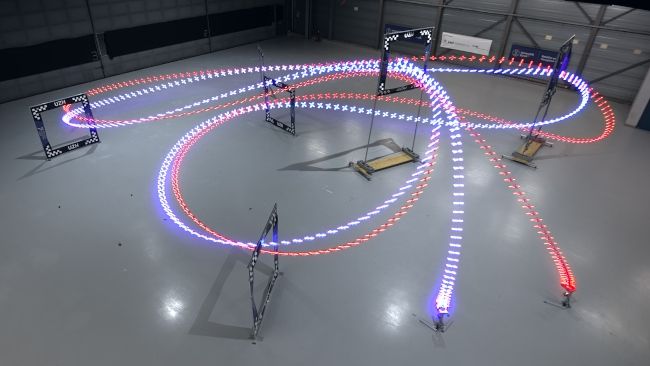Scientists from the University of Zurich (UZH) have developed an AI system called Swift that defeated world champion drone racers, an impressive feat just years ago. Swift was trained in simulation before beating pilots in real-world competitions. It has applications for environmental monitoring, disaster response, and more.
Swift represents a new AI milestone like Deep Blue defeating chess grandmaster Garry Kasparov and AlphaGo beating the top Go player. Physical sports have been harder for AI to master due to unpredictability. The researchers had to train Swift to interact with the real world.
Previously, autonomous drones took twice as long to complete courses unless aided by external tracking. Swift reacts in real time to onboard camera data like human pilots. It uses the camera, inertia sensors, and a neural network to locate itself, detect gates, and choose optimal navigation actions.
Training occurred fully in simulation to avoid drone crashes during early learning phases. The team developed a method to optimize the simulator using real-world data. By autonomously flying set coordinates provided by external tracking, Swift could correct errors interpreting its onboard data. After just a month of simulated flying, Swift was ready.
The researchers challenged professional drone champions on a custom 25x25 meter course with seven gates. Swift recorded the fastest lap time, half a second quicker than the top human pilot. However, it struggled adapting to different lighting conditions unlike the people.
Lead author Elia Kaufman said, "In areas like forest monitoring or space exploration, flight speed is important to cover large areas in a limited time." The increased autonomous speeds also benefit drone cinematography and disaster response.
Professor Davide Scaramuzza noted that faster flight improves efficiency by reducing drones' energy expenditure on staying airborne. This technology leap opens new possibilities for drone delivery, infrastructure inspection, agriculture, and more.
By besting human champions in a physical sport for the first time, Swift underscores AI's increasing capabilities. Simulation-based training enabled superhuman drone racing speeds. UZH's innovation shows autonomous speed and navigation advancing rapidly, soon unlocking new drone applications.


















